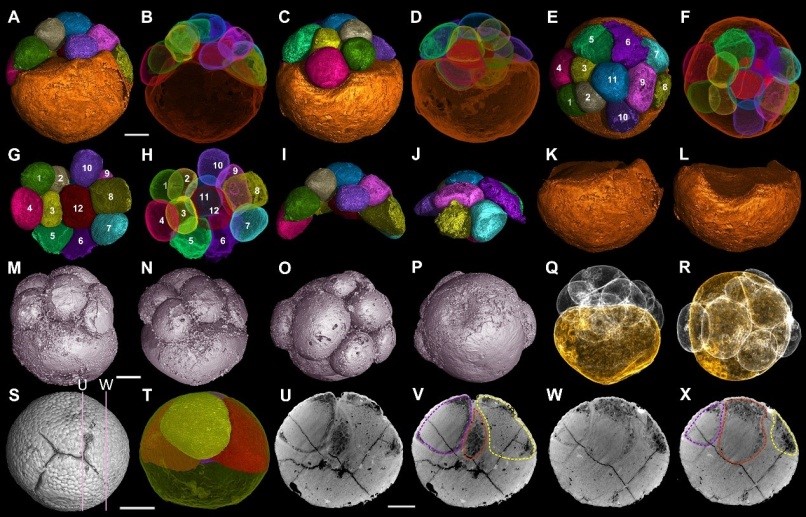The origin and early evolution of animals have been a fascinating issue since Charles Darwin. Calculating molecular divergences and decoding fossil records are two significant approaches to address this mystery. Current data from the two approaches, however, have resulted in different perspectives on this issue. The molecular clocks estimated that animals may have arisen 750 million years ago (Ma), yet the first definite animal fossils occurred during very late Ediacaran, probably no more than 555 Ma.
Under this background, the ca. 600 million-year-old Ediacaran embryo-like fossils from South China provide a compelling case to reconcile the inconsistency of the two approaches because they were ever taken as early animal remains. However, their affinities are still in debate.
Recently, Dr. YIN Zongjun from NIGPAS and his colleagues reported new fossil forms from the Ediacaran Doushantuo phosphorite from South China. They used high-resolution synchrotron radiation X-ray microtomography to reconstruct three-dimensional structures of the fossils, and the results demonstrate that these fossils preserve features directly comparable to living animal embryos that utilize discoidal-type incomplete cell division.
This discovery suggests that some Ediacaran embryo-like fossils are likely embryos of animals. Animals probably have arisen on Earth as early as ca. 600 million years ago.
The study has been published on Geology.
.....CONTENTS OF PALAEONEWS NO.4.....
Download:

